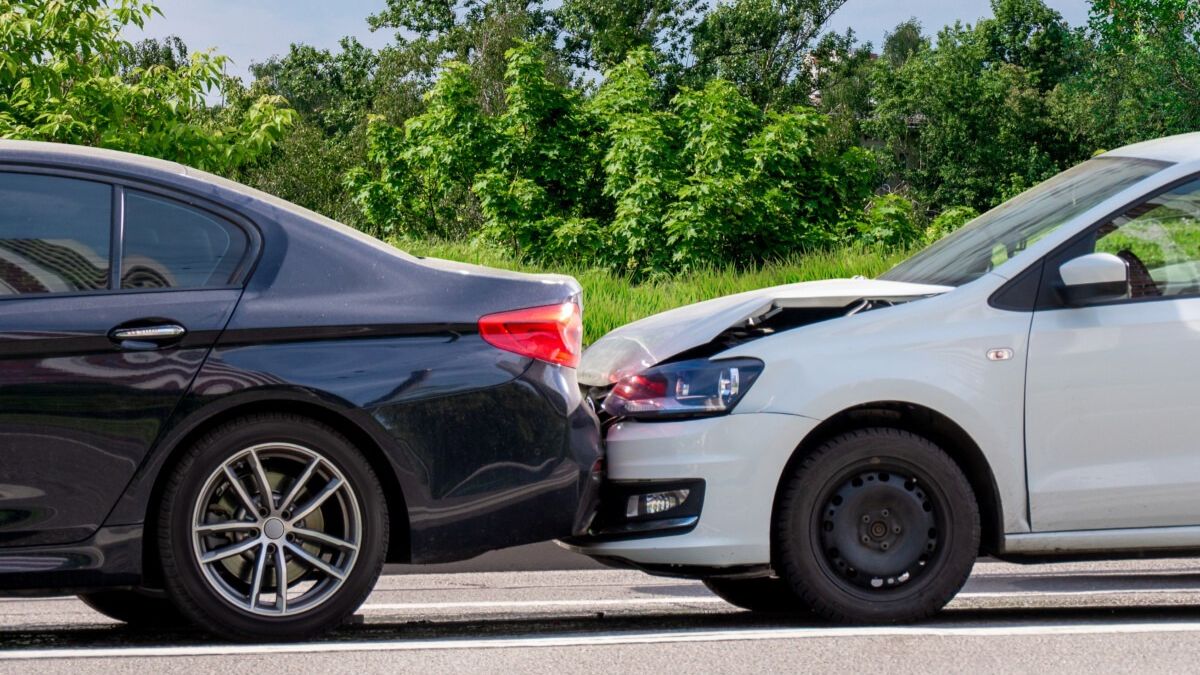LAW
Proving Your Innocence: Navigating Blame In Car Accidents

Understanding The Dynamics Of Car Accidents
Being blamed for a car accident that wasn’t my fault can be frustrating and legally challenging. Car accidents often unfold in seconds; confusion and adrenaline can cloud the immediate aftermath. Emotional responses usually precede rational thinking, leading to hasty conclusions about accountability. This human error is compounded by the inherent chaos of road mishaps, where even eyewitness accounts can become unreliable due to the speed at which things transpire.
Recognizing the fast-paced nature of accidents emphasizes the necessity of being well-prepared with concrete proof. It is essential to consider that justice does not favor ill-prepared people. You can effectively demonstrate your claim and protect your rights with the proper steps and a calm mind. Being knowledgeable about accident dynamics fosters self-assurance and prepares you to handle the accusations with a strategic mindset.
Steps To Gather Crucial Evidence
- Document The Scene: Visual records such as photographs are indispensable. Take pictures of the accident location, highlighting road signs, tire marks, vehicle placements, and any damages. Such visual evidence offers an unbiased account of the accident and is a reliable reference when rebuilding the event narrative. The details captured can counter any wrongful accusations and highlight inconsistencies in opposing claims.
- Collect Witness Statements: As chaotic as the scene might be, clarity often emerges through the accounts of those who observed the incident. Engaging with witnesses and gathering their statements can provide corroborative perspectives. Eyewitnesses provide neutral accounts, which are crucial when resolving disputes. Always ask for contact details so you can reach them for further testimony if needed.
- Get Police Reports: A police report is a critical document that provides an authoritative view of the event. Acquiring a copy is pivotal, as it is an authoritative account of what occurred. Police reports often include critical details such as diagrams of the accident scene and statements from both parties, serving as substantial evidence during disputes.
The Role Of Technology In Proving Innocence
Today, technology plays an invaluable role in protecting drivers. Dashcams, in particular, have become increasingly popular not just for their ability to replay incidents but also as objective witnesses. These compact devices capture the events leading up to and during an accident, providing invaluable visual data. The footage can serve as decisive evidence to support your claims in contentious scenarios. With growing recognition of their value, insurance companies often use dashcam footage to adjudicate claims swiftly and objectively.
Furthermore, smartphone applications are emerging that can help document accidents comprehensively. These apps guide drivers through evidence collection, ensuring no critical detail is overlooked. Embracing such technological aids safeguards drivers and reinforces their position during insurance disputes.
Legal Avenues To Explore
When facing wrongful accusations, aligning yourself with expert legal counsel can significantly influence the outcome. Attorneys specializing in traffic incidents possess the acumen to dismantle incorrect claims and reconstruct a truthful account for the court. Their experience can alleviate the confusion and anxiety surrounding legal proceedings, turning an otherwise daunting process into a pursuit of justice.
An attorney ensures that all evidence is utilized effectively and any ambiguities in legal documentation are addressed. Additionally, they can assist in managing the intricacies of insurance discussions, guaranteeing you obtain equitable compensation for any damages experienced. Understanding the legal framework and accessing strategic legal insights provides a robust defense against incorrectly assigned blame.
Handling Insurance Disputes
Insurance processes demand meticulous communication. In resolving disputes, maintaining comprehensive records of interactions with insurers is crucial. Every correspondence, whether an email, a letter, or a documented phone call, is evidence of your proactive engagement and transparency regarding the accident. This diligence can be instrumental in securing a favorable resolution.
Moreover, present your evidence clearly and concisely to insurance adjusters, emphasizing corroborative evidence such as the police report and witness testimonies. Demonstrating your preparedness and investment in the process showcases your dedication to rectifying wrongful claims.
Overcoming the Psychological Impact
Being wrongfully blamed can damage emotional well-being. The stress of defending yourself against inaccurate accusations can lead to frustration, anxiety, and helplessness. Addressing this emotional upheaval is paramount. Speaking openly with friends, family, or even professional therapists can provide emotional support, helping you process the turmoil effectively.
Understanding that the journey may be lengthy, allow yourself the space to cope with the emotional aspects of your ordeal while concurrently managing the legal facets. Maintaining a holistic approach to your well-being ensures you manage stress levels and retain peace of mind throughout this challenging period.
Prevention Tactics To Avoid Future Misunderstandings
Adopting proactive measures can smooth the road ahead. Regular vehicle maintenance, which includes checks on brakes, tires, and lights, is a basic yet essential step in preventing accidents. Adhering strictly to traffic regulations, keeping within speed limits, and avoiding distractions while driving are cardinal rules that significantly mitigate risks. Furthermore, staying vigilant and being especially aware of erratic driver behavior enables you to respond preemptively, averting potential danger.
Educating yourself about new vehicle safety technologies, like collision warning systems and automatic braking, can further enhance road safety measures. In doing so, you protect yourself and your vehicle and strengthen your defense should the unforeseeable occur again, ensuring that future misattributions are easily rectified.

LAW
How Diversity and Inclusion Enhance the Legal Profession

Introduction to Diversity in Law
The legal profession is undergoing a substantial transition, with diversity and inclusion emerging as critical components in its development. Many industry leaders recognize the value of integrating diverse perspectives to drive innovative solutions. Notably, prominent figures like Edward Batts Gibson Dunn advocate for this shift, highlighting the importance of embracing varied backgrounds and experiences in legal settings.
Diverse teams are instrumental in addressing complex legal challenges, ensuring more robust and comprehensive outcomes. Law firms can better serve many clients by fostering an environment that values inclusion while enhancing their operational efficacy and adaptability to dynamic legal landscapes.
Current Status of Diversity in the Legal Profession
Despite the progress made over recent years, the legal field still faces challenges regarding diversity and representation. Studies have consistently shown that minorities remain underrepresented in many law firms and legal institutions. A report by the American Bar Association highlights the limited representation of diverse groups at senior levels, pointing toward the need for systemic change.
Efforts to advance diversity often involve bringing attention to unconscious biases and improving access to opportunities for all. The ongoing discussion underscores the importance of creating pathways for minorities to assume leadership roles within the legal community.
Benefits of Diversity in Legal Teams
The advantages of assembling diverse legal teams are well-documented. Such teams bring many perspectives and experiences, fostering an environment conducive to innovative problem-solving and enhanced decision-making. Research indicates that diverse teams are 35% more likely to outperform their less diverse counterparts. This performance uptick is attributable to varied approaches and a deeper understanding of cultural nuances.
Additionally, diversity in legal teams often leads to stronger client relationships. Clients appreciate when their legal representation understands and respects their unique needs and circumstances, which is more readily achieved through a diverse team.
Inclusion: Fostering a Supportive Environment
Inclusivity goes hand in hand with diversity, which is crucial for retaining diverse talent. Law firms prioritizing inclusivity attract a wider talent pool and enjoy higher employee engagement and job satisfaction. An inclusive culture ensures that everyone feels valued and capable of contributing meaningfully to the organization regardless of their background.
Creating such an environment involves implementing practices that support all employees, such as mentorship opportunities and inclusive policies. When diverse employees feel supported, they are more likely to stay and grow within the firm, further enhancing its diversity.
Overcoming Challenges to Diversity
Despite the recognized benefits, achieving true diversity remains challenging. Unconscious biases and unequal access to opportunities persist within many legal settings. Addressing these issues head-on through comprehensive training programs and policy reforms that promote fairness and equality is imperative.
Law firms must actively dismantle barriers to entry and advancement for underrepresented groups, fostering a culture prioritizing merit and inclusivity over ingrained biases.
Strategies for Increasing Diversity
Practical strategies to boost diversity within the legal profession include mentorship programs and inclusive recruitment practices. By focusing on expanding access to education and training for minorities, firms can create a more level playing field. Furthermore, developing a supportive infrastructure within firms can help nurture diverse talent.
Programs spearheaded by various diversity initiatives offer frameworks that can be tailored to individual firm needs. They also provide guidance on best practices for recruitment and retention.
Conclusion: Future of Diversity in Law
The effort to achieve real diversity and inclusion in the legal profession continues. By embracing diverse perspectives and fostering an inclusive culture, law firms align with ethical standards and set themselves up for tremendous success. As firms continue to evolve and adapt to the demands of the present, prioritizing diversity will ensure they remain competitive and responsive to the needs of a global client base.
Investing in diversity is not just about meeting ethical obligations—it’s a strategic choice that enhances the legal industry’s richness and effectiveness.
-

 BUSINESS11 months ago
BUSINESS11 months agoStreamlining Your Orders: How ProcurementNation.com Shipping
-

 TOPIC12 months ago
TOPIC12 months agoThe Art of the Baldric: A Historical Overview and Its Cultural Significance
-

 CRYPTO11 months ago
CRYPTO11 months agoCrypto30x.com ASX: Your Gateway to Cryptocurrency Investments
-

 TECHNOLOGY11 months ago
TECHNOLOGY11 months agoExploring EvolvedGross.com/: A Deep Dive into Innovative Content
-

 TOPIC11 months ago
TOPIC11 months agoWhat You Need to Know About News TheAmericanSecretscom
-

 BUSINESS12 months ago
BUSINESS12 months agoExploring ChannelSynCharma: The Future of Collaborative Platforms
-

 TECHNOLOGY11 months ago
TECHNOLOGY11 months agoMylt34: The Game Changer in Modern Technology
-

 BUSINESS11 months ago
BUSINESS11 months agoA Deep Dive into carmenton.xyz: Features, Benefits, and User Experience